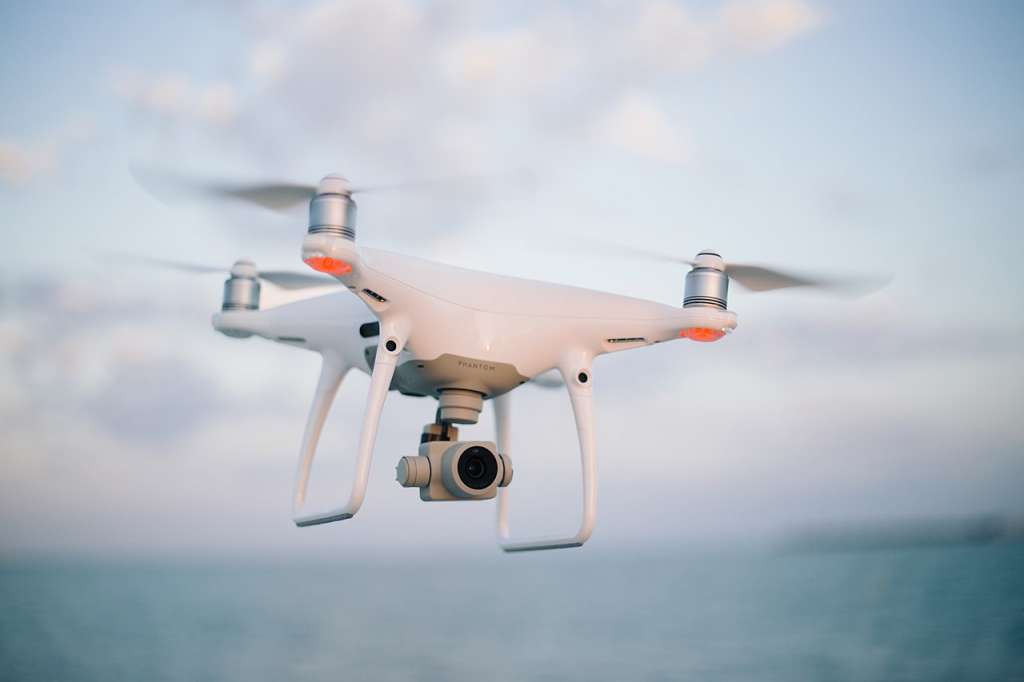Researchers have developed a novel machine learning approach which lets us design quieter drone propellers and lessen the annoying drone-like buzz we’re often accustomed to around these flying machines.
A team from RMIT University, Delft University of Technology in the Netherlands, and Melbourne aerospace company XROTOR 3D printed a number of prototypes designed by machine learning and discovered they produced around 15 decibels less noise than commercially available drone propellers.
The research, published in Aerospace Research Central1, describes how various propeller designs were created by specially developed algorithms and tested at an ‘echo-free’ chamber at the Commonwealth Scientific and Industrial Research Organisation.
The results could be used to develop quieter drones to be used in high density urban areas in the future.
“Our method for optimising design can be applied to small propellers used on drones to much larger ones used for future urban air mobility vehicles – or air taxis – designed to carry human passengers,” said RMIT University aerospace engineer and lead researcher Dr Abdulghani Mohamed.
XROTOR managing director Geoff Durham said the new designs not only reduced noise but also maintained other necessary attributes to enable drone efficiency while in the air.
“Not only were the designs appreciably quieter to the human ear, but the propellers had a higher thrust profile against standard market propellers at the same throttle signal input,” he said.
An iterative process to remove annoyance
The promising propeller design results stemmed from how the machine learning algorithm was created.
“By using our algorithms to iterate through a variety of propeller designs, we were able to optimise for different metrics such as thrust, torque, sound directivity and much more,” Dr Mohamed said.
The machine learning algorithms looked at the aerodynamic and acoustic performance of a number of propeller permutations, or variations, using computational fluid dynamics, Dr Mohamed told Lab Down Under.
“These simulations ran on our super-computers for several weeks. The results where then used within a regression model with the objective of identifying geometric parameters which result in a sound reduction,” he said.
“Through an iterative process we were able to arrive at a set of geometric parameters that led to a lower acoustic noise.”

Image: Different drone propeller designs created by RMIT’s algorithm
A new design metric for high frequency noise
Within the machine learning algorithm, the researchers implemented a new metric which involves how the human ear perceives sound and used that for the design of their drone propeller prototypes.
“This time-varying amplitude is known as the modulation of rotor noise and occurs for all single- and multi-rotor configurations: e.g. the time-dependent whooshing of the noise from slowly rotating wind turbine-rotors, or the higher-frequency buzzing type of noise from drone propellers,” the scientists wrote.
Quantifying the modulation in this way could potentially used as an important design metric for future propellers, Dr Mohamed said.
“The modulation of high frequency noise is a major factor in the human perception of rotor noise. Human ears are more sensitive to certain frequencies than others and our perception of sound also changes as we age,” he explained.
“By designing to such metrics, which take into account human perception, we can design less annoying propellers, which one day may actually be pleasant to hear.”
Further work to enhance overall drone design
The machine learning methodology is scalable in that it could be used for a wide range of potential drone propeller designs, Dr Muhamed told Lab Down Under.
“The methodology is scalable in the sense that the different fluids and their regimes at different speeds can be modelled appropriately, so anything from a tiny drone propeller (several inches in diameter) to large maritime propellers (several meters in diameter) can be modelled,” he said.
Future work was also needed to correlate the newly-developed metric to human perception through psycho-acoustic methods, the researchers said.
“Once this parameter is deemed viable in assessing aspects of annoyance, it can facilitate the assessment of the noise impact (by for instance applying it to data of high-fidelity numerical computations of rotor noise or even to noise data of complete UAM vehicles in urban environments),” they wrote in their paper.
Durham told Lab Down Under that further research was being conducted on these propeller prototypes in order to bring about more improvements to their overall designs.
“XROTOR is working internally and with the Defence Science and Technology Group to further develop our designs. We are also considering other periodic (rotational & interaction/distortion) and broadband (vortex and turbulence) acoustic contributors to further refine our solutions before commercialising them for defence, commercial and recreational purposes.”
Dr Muhamed also said work could be done to shifting the noise towards sound frequencies inaudible to humans but still heard by certain animals.
“Our team previously explored the concept of using drones designed to look like a wedge tail eagle with the intention of scaring off smaller birds around farms or in high-risk locations such as airports to reduce bird strikes. Adding sound to the looks is certainly feasible and can add to the scare factor,” he told Lab Down Under.
The RMIT Unmanned Aircraft Systems Research Team also included Dr Woutijn Baars, Dr Robert Carrese, Professor Simon Watkins, Professor Pier Marzocca and aerospace engineering student Liam Bullard.
1 Baars W, Bullard L, Mohamed A. Quantifying modulation in the acoustic field of a small-scale rotor using bispectral analysis. AIAA 2021-0713, January 2021.
Featured image: A quadcopter camera drone in flight. Picture by Josh Sorenson. Used under the Creative Commons CC0 1.0 Universal Public Domain Dedication.
